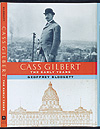|
Bookshelf
Page 1
 Seabook Seabook
By Rebekah Bloyd '83
Meduza, 2000
Reviewed by Ellen Orleans '83
Bloyd's life experience illuminate each poem of Seabook,
her long-awaited first book of poetry. Thirty-one poems offer stunning
images of Grand Cayman and Jamaica, where Bloyd lived and taught
in the late '80s and early '90s. Her poems skillfully juxtapose
physical and inner worlds, raising essential questions: What does
it mean to be an outsider? Who belongs? What is home?
Answers to these questions (or the beginnings of answers)
come in many forms. In the prose poem "Spring Night, the Queen's
Highway" the driver is taken aback by a huge land crab caught
in the headlights. Her passenger is nonchalant. The driver later
muses, "You from this island. Me the navigator, the surveyor,
the dreamer, the inquisitive, the visitor. The one that is stunned."
In another poem, a teaching session with a Caymanian child is highlighted:
My colors are not yours. When I ask
the skin question, you say brown.
The hair question, you say black.
These are always right.
But the sun question. You say purple...
The bright colors and vivid smells that North Americans
often associate with the Caribbean can certainly be found in Seabook
(ganga, jerk chicken, ginger biscuits, and giant blossoming trees
fill "Hope Street Studio II"), but alongside are grim
realities: thieves, gunfire, impoverished children who knock on
apartment doors in search of food. Bloyd writes of illness and death
in the Kingston streets and in her own family. In "Entry,"
against the backdrop of cleaning a parrot fish, she narrates, "Grandmother
dead of diabetes. Cousin, aunts, grandmother, father dead of cancer.
I have witnessed proud flesh, cleaned stinking sores, given morphine.
Snap! went a rib under my supportive hand. No fish stories here."
With Seabook, Bloyd not only adds her voice
to the line of women who have lived in and been captivated by the
Caribbean, but she honors them as well. Excerpts from Jean Rhys'
autobiography and from the diaries of Mary Seacole, Mary Nugent,
and Edna Manley preface major sections. Set against subtle backgrounds
of Caribbean photos, these passages offer historical context for
the book and contribute to the visual beauty of the collection.
Recurring throughout the book are diary-like notations
called "Entry" that challenge us to consider the worlds
we choose to enter and the emotional space we can examine. Bloyd
concludes, "I don't know that I can see / anything at all /
that hasn't been seen before." Perhaps this is true. Like the
rest of us, Bloyd may not be able to see anything that hasn't been
seen before. Yet, what she does see, she does so in fresh and striking
ways, illuminating her world for her readers and enlightening us
all.
Rebekah Bloyd's poetry, essays, and translations with the late Czech
poet Miroslav Holub have appeared in Field, The Times Literary Supplement,
Harper's Magazine, and more. She lives in San Francisco and teaches
at the Institute for Writing and Thinking at Bard College. For more
information, visit www.flyservers.com/members/twofishpress.com.
 Cass
Gilbert: The Early Years Cass
Gilbert: The Early Years
By Geoffrey Blodgett '53
Minnesota Historical Society Press, 2001
One of America's preeminent architects, Cass Gilbert (1859-1934)
was famous for his soaring vision and classical design, demonstrated
in such landmarks as the U.S. Supreme Court Building and the Minnesota
State Capitol building for which he earned national recognition.
Oberlinians, of course, know well his five campus creations, including
Finney Chapel, Bosworth Hall, and the Allen Memorial Art Museum.
This book focuses on Gilbert's formative years in St. Paul designing
distinctive private residences, churches, and enduring public buildings.
Included are numerous photographs, paintings, and sketches. Blodgett,
prior to his death last year, was Oberlin's Emeritus Robert S. Danforth
Professor of History.
After E-Mail: New Internet Tools That Can Save Time and Improve
Your Performance
By Roger Kropf '68
YBK Publishers, 2001
Learn to handle business affairs efficiently by using new and upgraded
Internet tools. Many are free, Kropf says, and are immediately useable
without adding software or making serious computer changes. Learn
about virtual offices, personal portals, digital dailies, and videoconferencing,
and how to avoid wasting time with e-mail or other distracting cruxes.
A professor of health management at the Wagner Graduate School of
Public Service at NYU, Kropf teaches courses on information systems
and strategic planning.
Lost Chords: White Musicians and Their Contribution
to Jazz, 1915-1945
By Richard M. Sudhalter '60
Oxford University Press, 2001
Jazz musicians of all races found ways to listen to and learn from
one another in 1920's America. Sudhalter, a trumpeter-historian,
pays tribute to this shared heritage with photographs and vivid
narration concerning the white contribution to jazz, with legends
like Benny Goodman, Artie Shaw, Pee Wee Russell, the Dorsey Brothers,
and others. He examines bands such as the New Orleans Rhythm Kings,
the Original Memphis Five, and the Casa Loma Orchestra, along the
way giving due credit to Louis Armstrong, Lester Young, Duke Ellington,
and countless other major black figures.
Page 1 | 2
| 3 of Bookshelf
|



 Cass
Gilbert: The Early Years
Cass
Gilbert: The Early Years